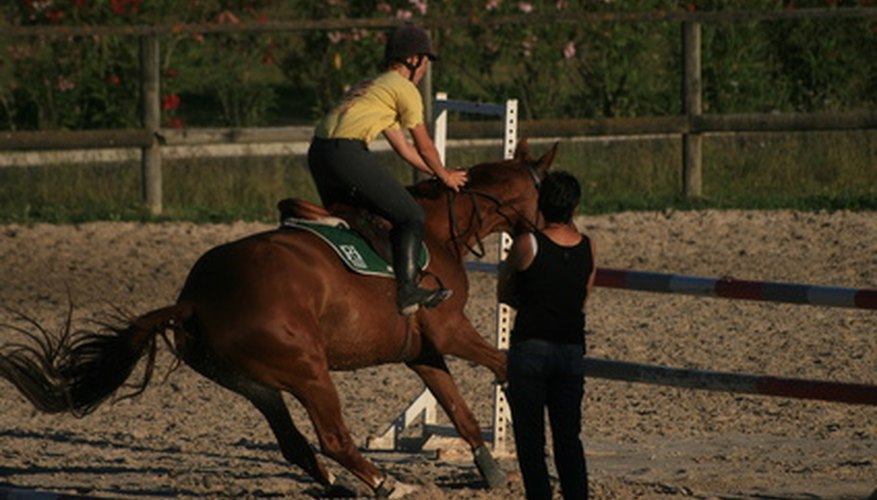A performance horse must have well-developed chest muscles because they are vital to his ability to carry weight and perform consistently. Under-developed chest muscles may interfere with the horse's gait, especially while trotting. While it is possible to build chest muscles in a sport horse with anabolic steroids, a safer and a more long-lasting solution is to build them naturally, through an exercise routine that incorporates appropriate dietary supplements.
- A performance horse must have well-developed chest muscles because they are vital to his ability to carry weight and perform consistently.
- While it is possible to build chest muscles in a sport horse with anabolic steroids, a safer and a more long-lasting solution is to build them naturally, through an exercise routine that incorporates appropriate dietary supplements.
Lunge the horse consistently, for 20 minutes a day, with a day or two of rest each week. Include five minutes of walk/trot/canter on the first side and then five minutes of transitions. Switch sides and do the same thing. Work on transitions between trot and walk, trot and canter, working trot and lengthened trot, working canter and lengthened canter, and canter and walk.
Ride on very soft soil or a ploughed field. Just as it is harder for you to run on the beach, it is more difficult for your horse to move on soft soil. A gentler surface builds muscle and eases strain on the joints.
Try water therapy or riding through lakes or rivers, if available. Many training facilities offer specially-formulated horse treadmills to allow your horse to work out while preventing injury. If you don't have a facility near you, you can incorporate trail riding through water into your horse's routine.
- Ride on very soft soil or a ploughed field.
- If you don't have a facility near you, you can incorporate trail riding through water into your horse's routine.
Add a performance supplement to your horse's diet. You can buy combination performance supplements or add things like Vitamins C and E, pine bark, leucine, or HMB (calcium b-hydroxy b-methyl butyrate monohydrate) to your horse's diet. If your horse has specific dietary needs, it is best to talk to your vet about what supplements you are considering.
Be consistent with exercise. It is better to work out 20 minutes each day than 1 hour per week. Make sure your horse is getting adequate rest, food, and plenty of protein in his diet. Without sufficient protein, he can't build muscle.
TIP
The exercises listed in the lunge don't need to be accomplished all in one workout, as it is fairly strenuous. The transitions themselves are what build muscles in your horse, so including them is the most important thing.
